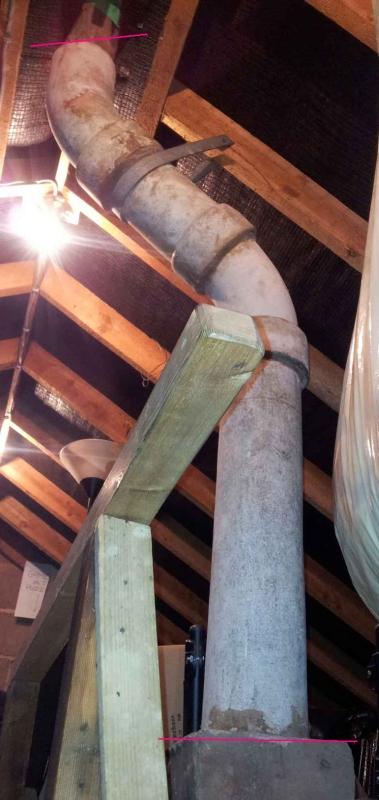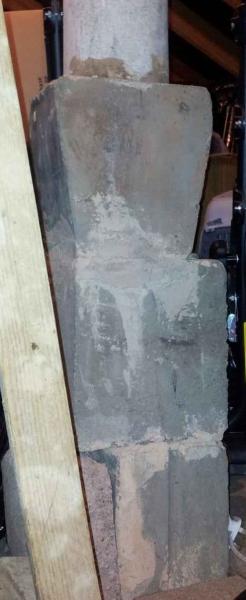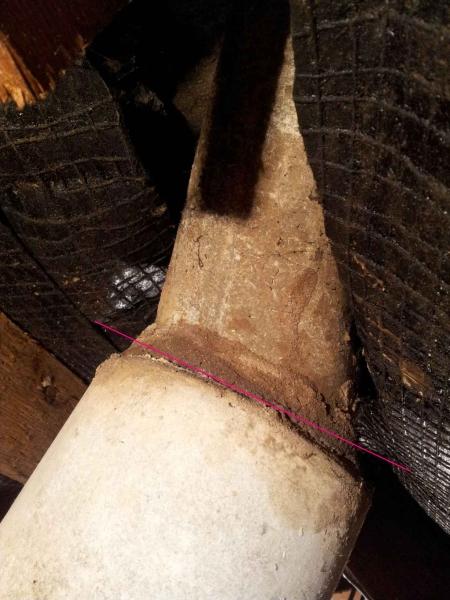Hi there,
I've just had an old boiler removed from the kitchen and now have an open vent pipe running from the kitchen wall (with a grille on it) up through the house out the roof. The engineer told me not to fill it in due to condensation.
In the loft, the pipe is in the middle and restricts access to the loftspace. What I want to do is remove the section from the floor to where it connects to the part which is fitted in the roof and put a vent in the loft floor so the pipe is still venting. I foresee no problem with this part (please advise me if I'm wrong).
Below shows the bit in the loft which I want to remove. I am concerned the pipe in the middle may be asbestos however...
Can someone please confirm if this looks to be the case?
The blocks at the bottom appear to be concrete so what I had planned to do is remove these and take the pipe it to my local waste centre for disposal. Before I do it, is this safe to do please?
Thanks for your help!
I've just had an old boiler removed from the kitchen and now have an open vent pipe running from the kitchen wall (with a grille on it) up through the house out the roof. The engineer told me not to fill it in due to condensation.
In the loft, the pipe is in the middle and restricts access to the loftspace. What I want to do is remove the section from the floor to where it connects to the part which is fitted in the roof and put a vent in the loft floor so the pipe is still venting. I foresee no problem with this part (please advise me if I'm wrong).
Below shows the bit in the loft which I want to remove. I am concerned the pipe in the middle may be asbestos however...
Can someone please confirm if this looks to be the case?
The blocks at the bottom appear to be concrete so what I had planned to do is remove these and take the pipe it to my local waste centre for disposal. Before I do it, is this safe to do please?
Thanks for your help!




